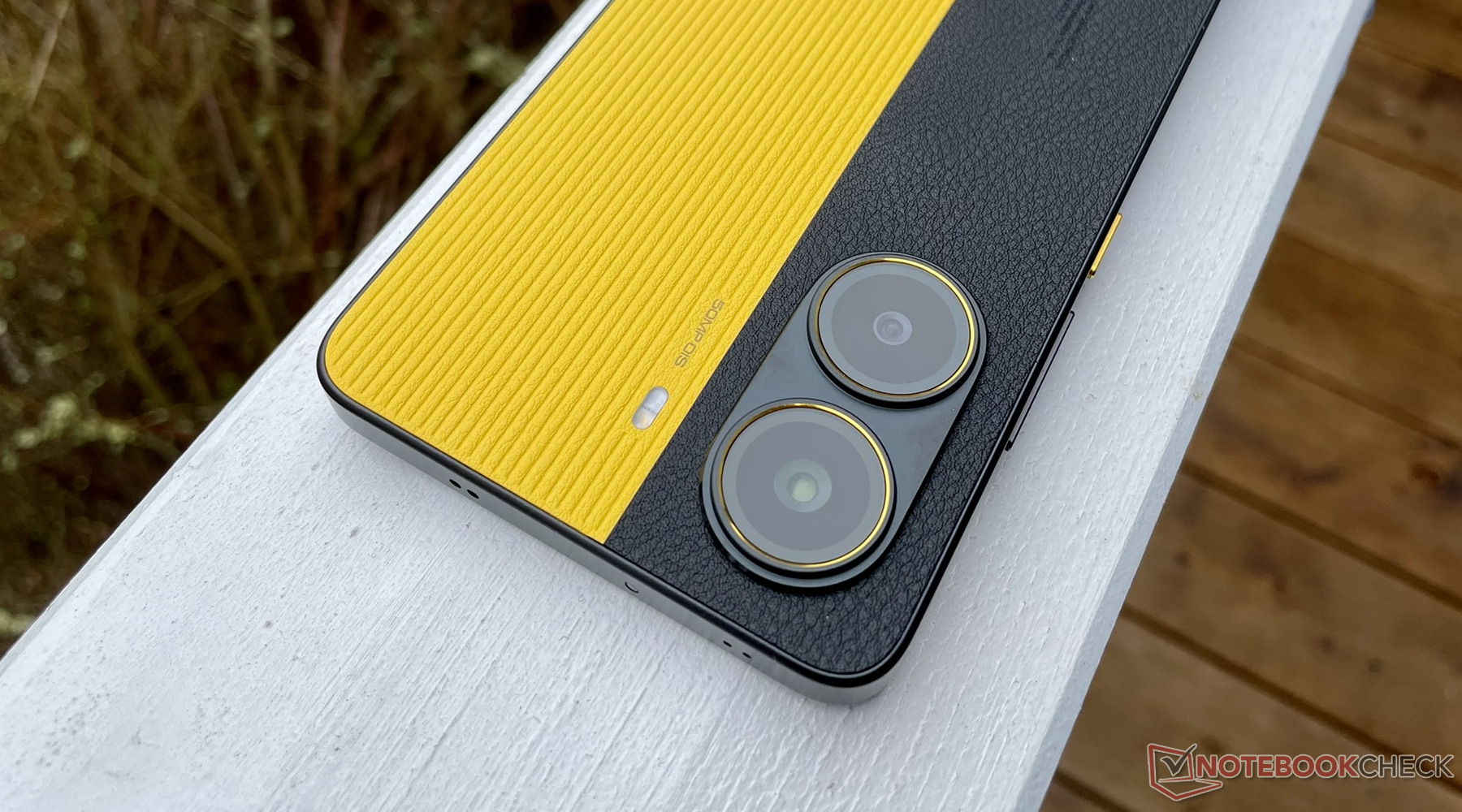
Xiaomi Poco X7 Pro Smartphone Review: Dimensity 8400-Ultra debut with software updates until 2029 for under €400
Great equipment, low price.
The inexpensive Xiaomi Poco X7 Pro makes other mid-range smartphones look pale in comparison. For well under €400 (~$420), the Poco X7 Pro debuts the new MediaTek Dimensity 8400-Ultra that offers brute performance on a par with a 2024 flagship, a 120 Hz AMOLED display, and an above-average battery life. However, buyers should also be aware of a few disadvantages.Manuel Masiero, 👁 Daniel Schmidt, ✓ Vaidyanathan Subramaniam (translated by DeepL / Ninh Duy) Published 🇩🇪 🇫🇷 ...
Verdict: A lot of premium in a mid-range smartphone
The Xiaomi Poco X7 Pro is the right smartphone for buyers who want to spend little but are not prepared to accept major compromises in terms of features and performance.
You have to do without features such as a full always-on display, eSIM support, and wireless charging. Nevertheless, the rest of the technology does not need to shy away from comparison with upper-class phones.
The Xiaomi Poco X7 Pro's strength particularly lies in its MediaTek Dimensity 8400-Ultra SoC, which not only handles everyday tasks effortlessly but also runs complex games without frame rate drops.
It also has a 120 Hz AMOLED panel that offers four-digit peak brightness levels, a long battery life, and Android updates until 2029. The dual camera takes solid photos, and the black and yellow faux leather version of the high-quality build offers a good grip.
Pros
Cons
Price and availability
The Xiaomi Poco X7 Pro starts from €370 at the Xiaomi online store for the 8 GB / 256 GB variant while the tested 12 GB / 512 GB SKU will set you back by €430.
It is possible to find the top-end Poco X7 Pro variant retailing closer to €400 on Amazon.
Possible competitors in comparison
Image | Model / Review | Price | Weight | Drive | Display |
|---|---|---|---|---|---|
| Xiaomi Poco X7 Pro MediaTek Dimensity 8400 ⎘ ARM Mali-G720 MP7 ⎘ 12 GB Memory, 512 GB | Amazon: 1. $338.50 XIAOMI Poco X7 PRO 5G + 4G L... 2. $347.50 XIAOMI Poco X7 PRO 5G + 4G L... 3. $11.99 Ibywind Screen Protector For... List Price: 430€ | 198 g | 512 GB UFS 4.0 Flash | 6.67" 2712x1220 446 PPI AMOLED | |
| Google Pixel 8a Google Tensor G3 ⎘ ARM Mali-G715 MP7 ⎘ 8 GB Memory, 128 GB | Amazon: $469.00 List Price: 549€ | 188 g | 128 GB UFS 3.1 Flash | 6.10" 2400x1080 431 PPI AMOLED | |
| Motorola Edge 50 Neo MediaTek Dimensity 7300 ⎘ ARM Mali-G615 MP2 ⎘ 12 GB Memory, 512 GB | Amazon: 1. $6.99 Natbok 2 Pack 3D Compatible ... 2. $4.99 Mr.Shield Screen Protector c... 3. $6.88 PORRVDP Hydrogel Film Screen... List Price: 499€ | 171 g | 512 GB UFS 3.1 Flash | 6.40" 2670x1220 459 PPI P-OLED | |
| Nothing Phone (2a) MediaTek Dimensity 7200 ⎘ ARM Mali-G610 MP4 ⎘ 12 GB Memory, 256 GB | Amazon: 1. $49.00 CMF Buds 2a Wireless Earbuds... 2. $11.99 Ibywind 2 Pack Screen Protec... 3. $44.97 CMF Buds 2a Wireless Earbuds... List Price: 329€ | 190 g | 256 GB UFS 3.1 Flash | 6.70" 2412x1084 394 PPI AMOLED | |
| Samsung Galaxy A55 5G Samsung Exynos 1480 ⎘ Samsung Xclipse 530 ⎘ 8 GB Memory, 256 GB | Amazon: 1. $449.99 Samsung Galaxy A55 5G Dual S... 2. $399.99 Samsung Galaxy A55 5G A556E ... 3. $266.99 Samsung Galaxy A36 5G Ai (fo... List Price: 529€ | 213 g | 256 GB UFS 3.1 Flash | 6.60" 2340x1080 390 PPI Super AMOLED | |
| Xiaomi Poco X6 Pro 5G MediaTek Dimensity 8300-Ultra ⎘ ARM Mali-G615 MP6 ⎘ 12 GB Memory, 512 GB | Amazon: $339.99 List Price: 420€ | 186 g | 512 GB UFS 4.0 Flash | 6.67" 2712x1220 446 PPI AMOLED |
Table of Contents
- Verdict: A lot of premium in a mid-range smartphone
- Specifications
- Build: Faux leather and Iron Man Edition on offer
- Features: Poco X7 Pro with up to 12 GB RAM and 512 GB storage
- Software: HyperOS 2.0 with 4-year software updates
- Communication and GNSS: Equipped with Bluetooth 5.4 and Wi-Fi 6
- Telephony and Voice quality
- Cameras: Solid dual-50 MP cameras
- Accessories and Warranty: No power supply unit included
- Input devices and Operation: Up to 2,560 Hz touch sampling while gaming
- Display: 120 Hz AMOLED panel with comprehensive HDR support
- Performance: MediaTek Dimensity 8400-Ultra makes its debut
- Games: Max frame rates are almost guaranteed
- Emissions: Fast throttling under load
- Power management: Quick charges within 40 minutes
- Notebookcheck overall rating
Xiaomi offers affordable smartphones characterized by a good price-performance ratio under its subsidiary brand Poco. The Xiaomi Poco X7 Pro is no exception, as the base variant with 8 GB RAM and 256 GB storage priced at €370 (~$390) delivers performance that would have secured it a place among last year's flagship smartphones.
For price-conscious buyers, the Xiaomi Poco X7 Pro makes for an appealing choice. This is exactly what we already attested to with the Poco X6 Pro which proved to be one of the best smartphones in its price range back in the day.
The Poco X7 Pro not only surpasses its predecessor in terms of performance but also offers enhanced features and a longer warranty period.
Specifications
Build: Faux leather and Iron Man Edition on offer
The Xiaomi Poco X7 Pro's high-quality plastic build sports a flat and angular design with rounded corners. Weighing 198 g (195 g for the plastic back cover), the smartphone sits in the hand with a comfortable grip.
The Poco X7 Pro is waterproof and dustproof, thanks to its IP68 certification. The AMOLED panel is further protected by Gorilla Glass 7i and, according to Corning, is slated to withstand a fall from a height of one meter onto asphalt-like surfaces without damage. The smartphone withstood all attempts at denting or twist during testing.
The Poco X7 Pro's 8.9 mm back cover comes in a smooth plastic or artificial leather finish, depending on the color variant. The former is available to those who opt for the black or green color options.
We tested the most attention-grabbing "regular" variant. The yellow and black faux leather version not only stands out with its high-contrast coloring but also offers a much better grip thanks to its non-slippery surface.
A unique red Iron Man Edition can be found exclusively in the Xiaomi store.
Features: Poco X7 Pro with up to 12 GB RAM and 512 GB storage
Xiaomi offers the Poco X7 Pro in three memory variants listed below. They are equipped with UFS 4.0 memory and LPDDR5x RAM, offering more performance than usual in this price range. The Iron Man Edition comes only in a 12 GB RAM and 512 GB storage option.
- 8/256 GB: €370
- 12/256 GB: €400
- 12/512 GB: €430
The rest of the features are solid, but it becomes quickly evident that the Poco X7 Pro maintains a respectful distance from higher-end models, such as the Xiaomi 15 series.
For instance, there is no notification LED, and the always-on display remains active for just 10 seconds after tapping the screen. eSIMs are not supported by the Xiaomi phone. There is also no option to expand the memory via microSD card nor is there a 3.5 mm headphone jack.
The OTG-capable USB-C port operates only at USB 2.0 speeds but still manages to transfer a very respectable 47.7 MB/s with our external Samsung 980 Pro test SSD. This is above the typical USB 2.0 performance, which barely goes any higher than 30 MB/s.
Software: HyperOS 2.0 with 4-year software updates
The Poco X7 Pro comes with Xiaomi's in-house HyperOS 2.0 operating system, which is based on Android 15 in the case of our review sample. Compared to the first HyperOS edition, practically nothing has changed externally, so new users should be able find their way around straight away.
Xiaomi does not provide any information on how long the Poco X7 Pro will be supplied with OS upgrades and security updates. In the Xiaomi Security Center, where this information is normally found, the smartphone is not listed at the time of testing.
However, current Redmi smartphones now receive three OS upgrades and four years of security updates, so you can expect something similar for the Poco X7 Pro. Software support should therefore be available until 2029.
HyperOS 2.0 brings more personalization options for the lock screen and also offers AI features, including the removal of unwanted objects from images. Google Gemini serves as an AI language assistant and further AI tools such as website summaries, image generation or translations are available via the Mi Browser.
Unfortunately, the Poco X7 Pro also has the habit of displaying advertisements in its system apps, which is familiar from other Xiaomi smartphones. Turning the ads off requires some configuration effort.
Xiaomi also loads its smartphone with a lot of bloatware, which reduces the free storage on our test device from a nominal 512 GB to 456 GB. That being said, the inbox apps can be deleted without any problems.
Sustainability
Xiaomi does not provide any precise information about the proportion of recycled materials used in its smartphones. However, according to the manufacturer, the amount of recycled aluminum, gold and copper has been increased for smartphone components.
The company also aims to keep its own ecological footprint as small as possible through measures such as the production of plastic material from discarded fishing nets and via trade-in programs.
Communication and GNSS: Equipped with Bluetooth 5.4 and Wi-Fi 6
Although the Poco X7 Pro is not a "world phone", it supports numerous mobile phone frequencies, which means you should usually get a signal even abroad.
Like its predecessor, the Poco X7 Pro also relies on NFC, Bluetooth 5.4, and Wi-Fi 6. Though we would have liked to see more modern Wi-Fi standards, the communication features are already above average for this price range.
The Xiaomi Poco X7 Pro cannot use the 6 GHz band but can still deliver a solid Wi-Fi performance with our Asus ROG Rapture GT-AXE11000 reference router.
Data transfers reach up to 965 MB/s and are very stable in both the send and receive directions. The transfer rates are generally slightly above the data throughput of the comparison devices.
The Xiaomi Poco X7 Pro supports all common satellite navigation services. It does not record the route of our approximately 4 km walk quite as accurately as our Garmin Venu 2 fitness smartwatch, but it does not make any major mistakes either. It is therefore quite suitable for most navigation tasks.
Telephony and Voice quality
The Xiaomi Poco X7 Pro supports phone functions such as VoLTE and calls via Wi-Fi, with the ability to accommodate two nano-SIM cards. eSIMs cannot be activated.
In our testing, the Xiaomi phone demonstrated good voice quality and reliably filtered out distracting background noise from calls, even in noisy environments. The phone also manages hands-free mode quite well, though the voices sound somewhat muffled.
Cameras: Solid dual-50 MP cameras
The Xiaomi Poco X7 Pro places its selfie camera in a small circular recess. The front camera uses the Omnivision OV20B image sensor and offers a 20 MP resolution. It takes coherent pictures with decent image sharpness, which is easily sufficient for everyday use. The selfie camera can record videos with a maximum of 1080p at 30 frames per second.
In contrast to the Poco X6 Pro, the Poco X7 Pro only has two cameras on the back instead of three. This is not really a step backwards, however, as only a few users are likely to mourn the loss of the 2 MP macro camera.
The Poco X7 Pro features a main camera with a resolution of 50 MP and an 8 MP ultra-wide-angle camera. The main camera is based on the Sony IMX882, works with an f/1.5 aperture, uses optical image stabilization (OIS), and produces 12.5 MP photos using 4-in-1 pixel binning. The full resolution can also be used with the 50 MP image mode in the camera app. The SmartSens SC820CS is used as the image sensor for the ultra-wide-angle camera.
Overall, the imaging performance is solidly average and is therefore within the range of what can be expected from a smartphone in this price range. In daylight, the Poco X7 Pro takes good pictures that show a relatively high level of detail, characterized by strong contrasts. However, they are sometimes much more intense than in reality, which makes them look artificial. The main camera performs well in zoom shots and in low residual light but only shows a few details. The ultra-wide-angle camera takes rather unspectacular but usable snapshots.
The main camera can record videos at up to 4K at 60 frames per second. Supported by the optical image stabilizer, the videos look pretty good. Switching between the main and ultra-wide-angle camera during recording only works up to a maximum of 1080p 30 fps
Image comparison
Choose a scene and navigate within the first image. One click changes the position on touchscreens. One click on the zoomed-in image opens the original in a new window. The first image shows the scaled photograph of the test device.
Tageslicht-Aufnahme 1Tageslicht-Aufnahme 2Ultraweitwinkel5-facher ZoomLowlight-AufnahmeUnder laboratory conditions, the main camera shows that it can capture colors precisely with optimal lighting (maximum Delta E of 11.1). It also captures the test chart sharply.
In the extreme scenario with a residual brightness of 1 lux, the camera still manages to perform well as the color chart and test chart remain recognizable even in these conditions.


Accessories and Warranty: No power supply unit included
The Poco X7 Pro comes with a USB Type-C cable (USB 2.0), a protective cover, a SIM tool, a quick start guide and another leaflet with safety instructions. The 90-watt power adapter is not included in the scope of delivery in the EU and the UK and is also not available in the manufacturer's online store at the time of testing.
In the Xiaomi store, you can purchase insurance cover for the Poco X7 Pro at Xiaomi Care. Depending on the package selected, this covers either accidental damage only (€39) or accidental damage and theft (€59) for a period of 2 years.
The Xiaomi Poco X7 Pro comes with a 12-month warranty in the EU.
Input devices and Operation: Up to 2,560 Hz touch sampling while gaming
The AMOLED screen of the Poco X7 Pro is scanned 480 times per second and converts inputs very quickly and accurately. In games, the touch sampling rate can increase to up to 2,560 Hz (in gaming turbo mode). Thanks to the 120 Hz refresh rate, the display is beautifully smooth. The vibration motor provides precise haptic feedback.
The power button, which was also colored yellow in our yellow and black test version, and the volume rocker sit firmly in the casing, have a precise pressure point, and leave a high-quality haptic impression. In addition to an always-on display, which is active for 10 seconds after tapping, a one-handed mode can also be activated, which reduces the display area accordingly.
The optical fingerprint sensor integrated into the display reliably unlocks the smartphone and also works when the screen is switched off. Biometric authentication is also possible using 2D facial recognition, which recognizes at the first attempt if there is sufficient ambient light.
Display: 120 Hz AMOLED panel with comprehensive HDR support
The AMOLED panel of the Poco X7 Pro has a resolution of 2,712 x 1,220 pixels and runs at up to a 120 Hz refresh rate. In the default setting, the smartphone automatically adjusts its refresh rate to the image content. It can be permanently set to 120 Hz if desired. In addition to HDR10 and HDR10+, the screen also supports HLG and Dolby Vision.
According to Xiaomi, the AMOLED screen achieves a maximum brightness of 1,400 nits, which increases to up to 3,200 nits in HDR mode. At 2,824 cd/m², our test device remains slightly below this mark, but almost exactly meets the manufacturer's specification with SDR image content at 1,372 cd/m².
If the brightness sensor is deactivated, a maximum of 532 cd/m² (SDR) or 897 cd/m² (HDR) can be elicited from the display. At the lowest brightness level, the display is still visible in low light with a luminance of 2.34 cd/m².
The AMOLED panel uses pulse width modulation (PWM) to control the brightness. As a result, the screen flickers at a PWM frequency of a low 120 Hz in all of the brightness levels we measured, which is actually not good news for sensitive users, although the signal amplitude is relatively flat.
At the same time, however, the AMOLED panel works with a PWM dimming frequency of 1,923 Hz (manufacturer's specification 1,920 Hz), so the negative PWM effects should be sufficiently mitigated.
| |||||||||||||||||||||||||
Brightness Distribution: 97 %
Center on Battery: 1034 cd/m²
Contrast: ∞:1 (Black: 0 cd/m²)
ΔE ColorChecker Calman: 1 | ∀{0.5-29.43 Ø4.78}
ΔE Greyscale Calman: 1.4 | ∀{0.09-98 Ø5}
99.6% sRGB (Calman 2D)
Gamma: 2.22
CCT: 6553 K
| Xiaomi Poco X7 Pro AMOLED, 2712x1220, 6.7" | Google Pixel 8a AMOLED, 2400x1080, 6.1" | Motorola Edge 50 Neo P-OLED, 2670x1220, 6.4" | Nothing Phone (2a) AMOLED, 2412x1084, 6.7" | Samsung Galaxy A55 5G Super AMOLED, 2340x1080, 6.6" | Xiaomi Poco X6 Pro 5G AMOLED, 2712x1220, 6.7" | |
|---|---|---|---|---|---|---|
| Screen | -6% | -29% | -10% | -16% | 0% | |
| Brightness middle (cd/m²) | 1034 | 1518 47% | 1246 21% | 1033 0% | 962 -7% | 1034 0% |
| Brightness (cd/m²) | 1041 | 1466 41% | 1235 19% | 1042 0% | 967 -7% | 1035 -1% |
| Brightness Distribution (%) | 97 | 88 -9% | 98 1% | 96 -1% | 99 2% | 96 -1% |
| Black Level * (cd/m²) | ||||||
| Colorchecker dE 2000 * | 1 | 1.2 -20% | 1.8 -80% | 1.6 -60% | 1.6 -60% | 1.1 -10% |
| Colorchecker dE 2000 max. * | 2.2 | 3.3 -50% | 3.81 -73% | 2.5 -14% | 2.6 -18% | 1.9 14% |
| Greyscale dE 2000 * | 1.4 | 2 -43% | 2.3 -64% | 1.2 14% | 1.5 -7% | 1.4 -0% |
| Gamma | 2.22 99% | 2.2 100% | 2.191 100% | 2.07 106% | 2.13 103% | 2.22 99% |
| CCT | 6553 99% | 6786 96% | 6488 100% | 6482 100% | 6382 102% | 6674 97% |
* ... smaller is better
Screen Flickering / PWM (Pulse-Width Modulation)
| Screen flickering / PWM detected | 120 Hz Amplitude: 14.29 % Secondary Frequency: 1923 Hz | ||
The display backlight flickers at 120 Hz (worst case, e.g., utilizing PWM) . The frequency of 120 Hz is very low, so the flickering may cause eyestrain and headaches after extended use. In comparison: 53 % of all tested devices do not use PWM to dim the display. If PWM was detected, an average of 8108 (minimum: 5 - maximum: 343500) Hz was measured. | |||
Measurement series with fixed zoom level and different brightness settings (The amplitude curve at minimum brightness looks flat, but this is due to the scaling. The info box shows the enlarged version of the amplitude at minimum brightness)
The AMOLED panel delivers the best picture quality in the Original Color Pro picture mode, which is active by default. We also recommend setting the color temperature to Warm.
The color precision, white balance, and RGB balance of our test device then fall in the optimum range.
Display Response Times
| ↔ Response Time Black to White | ||
|---|---|---|
| 1.43 ms ... rise ↗ and fall ↘ combined | ↗ 0.687 ms rise | |
| ↘ 0.742 ms fall | ||
| The screen shows very fast response rates in our tests and should be very well suited for fast-paced gaming. In comparison, all tested devices range from 0.1 (minimum) to 240 (maximum) ms. » 7 % of all devices are better. This means that the measured response time is better than the average of all tested devices (20.2 ms). | ||
| ↔ Response Time 50% Grey to 80% Grey | ||
| 1.69 ms ... rise ↗ and fall ↘ combined | ↗ 0.749 ms rise | |
| ↘ 0.9445 ms fall | ||
| The screen shows very fast response rates in our tests and should be very well suited for fast-paced gaming. In comparison, all tested devices range from 0.165 (minimum) to 636 (maximum) ms. » 7 % of all devices are better. This means that the measured response time is better than the average of all tested devices (31.6 ms). | ||
The Xiaomi Poco X7 Pro performs well outdoors. In the wintry light conditions prevailing at the time of testing, the AMOLED panel with its stable viewing angle has no problems displaying a legible image. This is unlikely to change much in summer.
Performance: MediaTek Dimensity 8400-Ultra makes its debut
In terms of performance, most other mid-range smartphones do not stand a chance against the Xiaomi Poco X7 Pro. This is due to the octa-core SoC MediaTek Dimensity 8400-Ultra, which gives the smartphone top-class performance.
In everyday use, the MediaTek Dimensity 8400-Ultra and the 12 GB RAM of our test device ensure a hiccup-free operation. Although the Poco X7 Pro does not come close to the performance of absolute flagships, it does not lack power at any time even for complex apps or games.
| UL Procyon AI Inference for Android - Overall Score NNAPI | |
| Xiaomi Poco X6 Pro 5G | |
| Average MediaTek Dimensity 8400 (49010 - 49165, n=2) | |
| Xiaomi Poco X7 Pro | |
| Google Pixel 8a | |
| Nothing Phone (2a) | |
| Average of class Smartphone (3769 - 81594, n=135, last 2 years) | |
| Samsung Galaxy A55 5G | |
| Geekbench AI | |
| Single Precision TensorFlow NNAPI 1.2 | |
| Xiaomi Poco X7 Pro | |
| Average MediaTek Dimensity 8400 (n=1) | |
| Average of class Smartphone (51 - 2472, n=53, last 2 years) | |
| Samsung Galaxy A55 5G | |
| Half Precision TensorFlow NNAPI 1.2 | |
| Xiaomi Poco X7 Pro | |
| Average MediaTek Dimensity 8400 (n=1) | |
| Average of class Smartphone (51 - 9453, n=53, last 2 years) | |
| Samsung Galaxy A55 5G | |
| Quantized TensorFlow NNAPI 1.2 | |
| Xiaomi Poco X7 Pro | |
| Average MediaTek Dimensity 8400 (n=1) | |
| Average of class Smartphone (123 - 13084, n=53, last 2 years) | |
| Samsung Galaxy A55 5G | |
| Single Precision TensorFlow NNAPI 1.1 | |
| Average of class Smartphone (122 - 4122, n=39, last 2 years) | |
| Motorola Edge 50 Neo | |
| Samsung Galaxy A55 5G | |
| Half Precision TensorFlow NNAPI 1.1 | |
| Average of class Smartphone (122 - 32120, n=39, last 2 years) | |
| Motorola Edge 50 Neo | |
| Samsung Galaxy A55 5G | |
| Quantized TensorFlow NNAPI 1.1 | |
| Average of class Smartphone (118 - 44381, n=39, last 2 years) | |
| Motorola Edge 50 Neo | |
| Samsung Galaxy A55 5G | |
The ARM Mali-G720 MC7 of the MediaTek Dimensity 8400-Ultra gives the Poco X7 Pro a brute graphics performance that only the Poco X6 Pro can match to some extent. The Google Pixel 8a also performs above average here.
GFXBench (DX / GLBenchmark) 2.7: T-Rex Onscreen | 1920x1080 T-Rex Offscreen
GFXBench 3.0: on screen Manhattan Onscreen OGL | 1920x1080 1080p Manhattan Offscreen
GFXBench 3.1: on screen Manhattan ES 3.1 Onscreen | 1920x1080 Manhattan ES 3.1 Offscreen
GFXBench: on screen Car Chase Onscreen | 1920x1080 Car Chase Offscreen | on screen Aztec Ruins High Tier Onscreen | 2560x1440 Aztec Ruins High Tier Offscreen | on screen Aztec Ruins Normal Tier Onscreen | 1920x1080 Aztec Ruins Normal Tier Offscreen | 3840x2160 4K Aztec Ruins High Tier Offscreen
| 3DMark / Wild Life Extreme Unlimited | |
| Xiaomi Poco X7 Pro | |
| Xiaomi Poco X6 Pro 5G | |
| Google Pixel 8a | |
| Nothing Phone (2a) | |
| Samsung Galaxy A55 5G | |
| Motorola Edge 50 Neo | |
| 3DMark / Wild Life Extreme | |
| Xiaomi Poco X7 Pro | |
| Xiaomi Poco X6 Pro 5G | |
| Google Pixel 8a | |
| Nothing Phone (2a) | |
| Samsung Galaxy A55 5G | |
| Motorola Edge 50 Neo | |
| 3DMark / Wild Life Unlimited Score | |
| Xiaomi Poco X7 Pro | |
| Xiaomi Poco X6 Pro 5G | |
| Google Pixel 8a | |
| Nothing Phone (2a) | |
| Samsung Galaxy A55 5G | |
| Motorola Edge 50 Neo | |
| 3DMark / Solar Bay Score | |
| Xiaomi Poco X7 Pro | |
| 3DMark / Solar Bay Unlimited Score | |
| Xiaomi Poco X7 Pro | |
| 3DMark / Steel Nomad Light Unlimited Score | |
| Xiaomi Poco X7 Pro | |
| Google Pixel 8a | |
| Motorola Edge 50 Neo | |
| 3DMark / Steel Nomad Light Score | |
| Xiaomi Poco X7 Pro | |
| Google Pixel 8a | |
| Motorola Edge 50 Neo | |
| 3DMark / Sling Shot Extreme (ES 3.1) Unlimited Physics | |
| Xiaomi Poco X7 Pro | |
| Xiaomi Poco X6 Pro 5G | |
| Samsung Galaxy A55 5G | |
| Motorola Edge 50 Neo | |
| Nothing Phone (2a) | |
| Google Pixel 8a | |
| 3DMark / Sling Shot Extreme (ES 3.1) Unlimited Graphics | |
| Xiaomi Poco X7 Pro | |
| Google Pixel 8a | |
| Xiaomi Poco X6 Pro 5G | |
| Samsung Galaxy A55 5G | |
| Nothing Phone (2a) | |
| Motorola Edge 50 Neo | |
| 3DMark / Sling Shot Extreme (ES 3.1) Unlimited | |
| Xiaomi Poco X7 Pro | |
| Xiaomi Poco X6 Pro 5G | |
| Google Pixel 8a | |
| Samsung Galaxy A55 5G | |
| Nothing Phone (2a) | |
| Motorola Edge 50 Neo | |
| GFXBench (DX / GLBenchmark) 2.7 / T-Rex Onscreen | |
| Xiaomi Poco X6 Pro 5G | |
| Xiaomi Poco X7 Pro | |
| Google Pixel 8a | |
| Samsung Galaxy A55 5G | |
| Nothing Phone (2a) | |
| GFXBench (DX / GLBenchmark) 2.7 / T-Rex Offscreen | |
| Xiaomi Poco X7 Pro | |
| Xiaomi Poco X6 Pro 5G | |
| Google Pixel 8a | |
| Nothing Phone (2a) | |
| Samsung Galaxy A55 5G | |
| GFXBench 3.0 / Manhattan Onscreen OGL | |
| Xiaomi Poco X6 Pro 5G | |
| Xiaomi Poco X7 Pro | |
| Google Pixel 8a | |
| Samsung Galaxy A55 5G | |
| Nothing Phone (2a) | |
| GFXBench 3.0 / 1080p Manhattan Offscreen | |
| Xiaomi Poco X7 Pro | |
| Google Pixel 8a | |
| Xiaomi Poco X6 Pro 5G | |
| Nothing Phone (2a) | |
| Samsung Galaxy A55 5G | |
| GFXBench 3.1 / Manhattan ES 3.1 Onscreen | |
| Xiaomi Poco X7 Pro | |
| Xiaomi Poco X6 Pro 5G | |
| Google Pixel 8a | |
| Nothing Phone (2a) | |
| Samsung Galaxy A55 5G | |
| GFXBench 3.1 / Manhattan ES 3.1 Offscreen | |
| Xiaomi Poco X7 Pro | |
| Xiaomi Poco X6 Pro 5G | |
| Google Pixel 8a | |
| Nothing Phone (2a) | |
| Samsung Galaxy A55 5G | |
| GFXBench / Car Chase Onscreen | |
| Xiaomi Poco X7 Pro | |
| Xiaomi Poco X6 Pro 5G | |
| Google Pixel 8a | |
| Nothing Phone (2a) | |
| Samsung Galaxy A55 5G | |
| GFXBench / Car Chase Offscreen | |
| Xiaomi Poco X7 Pro | |
| Xiaomi Poco X6 Pro 5G | |
| Google Pixel 8a | |
| Nothing Phone (2a) | |
| Samsung Galaxy A55 5G | |
| GFXBench / Aztec Ruins High Tier Onscreen | |
| Xiaomi Poco X7 Pro | |
| Xiaomi Poco X6 Pro 5G | |
| Google Pixel 8a | |
| Nothing Phone (2a) | |
| Samsung Galaxy A55 5G | |
| Motorola Edge 50 Neo | |
| GFXBench / Aztec Ruins High Tier Offscreen | |
| Xiaomi Poco X7 Pro | |
| Xiaomi Poco X6 Pro 5G | |
| Google Pixel 8a | |
| Nothing Phone (2a) | |
| Samsung Galaxy A55 5G | |
| Motorola Edge 50 Neo | |
| GFXBench / Aztec Ruins Normal Tier Onscreen | |
| Xiaomi Poco X7 Pro | |
| Xiaomi Poco X6 Pro 5G | |
| Google Pixel 8a | |
| Nothing Phone (2a) | |
| Samsung Galaxy A55 5G | |
| Motorola Edge 50 Neo | |
| GFXBench / Aztec Ruins Normal Tier Offscreen | |
| Xiaomi Poco X7 Pro | |
| Xiaomi Poco X6 Pro 5G | |
| Google Pixel 8a | |
| Nothing Phone (2a) | |
| Samsung Galaxy A55 5G | |
| Motorola Edge 50 Neo | |
| GFXBench / 4K Aztec Ruins High Tier Offscreen | |
| Xiaomi Poco X7 Pro | |
| Xiaomi Poco X6 Pro 5G | |
| Google Pixel 8a | |
| Nothing Phone (2a) | |
| Samsung Galaxy A55 5G | |
| Motorola Edge 50 Neo | |
Surfing the web is an easy task for the Poco X7 Pro as websites load quickly and are set up swiftly. This is also reflected in the strong browser benchmark results.
| Jetstream 2 - 2.0 Total Score | |
| Average of class Smartphone (23.8 - 387, n=149, last 2 years) | |
| Xiaomi Poco X7 Pro (Chrome 132.0.6834.163) | |
| Average MediaTek Dimensity 8400 (n=1) | |
| Xiaomi Poco X6 Pro 5G (Chrome 122.0.6261.64) | |
| Samsung Galaxy A55 5G (Chrome 123) | |
| Google Pixel 8a (Chrome 126) | |
| Nothing Phone (2a) (Firefox 124.2.0) | |
| Speedometer 2.0 - Result 2.0 | |
| Average of class Smartphone (15.2 - 643, n=122, last 2 years) | |
| Xiaomi Poco X7 Pro (Chrome 132.0.6834.163) | |
| Average MediaTek Dimensity 8400 (n=1) | |
| Xiaomi Poco X6 Pro 5G (Chrome 122.0.6261.64) | |
| Google Pixel 8a (Chrome 126) | |
| Samsung Galaxy A55 5G (Chrome 123) | |
| Nothing Phone (2a) (Chrome 123.0.6312.99) | |
| Speedometer 3 - Score 3.0 | |
| Average of class Smartphone (1.03 - 42.8, n=124, last 2 years) | |
| Xiaomi Poco X7 Pro (Chrome 132.0.6834.163) | |
| Average MediaTek Dimensity 8400 (9.76 - 11.7, n=2) | |
| Google Pixel 8a (Chrome 126) | |
| Nothing Phone (2a) (Chrome 123.0.6312.99) | |
| Samsung Galaxy A55 5G (Chrome 123) | |
| WebXPRT 4 - Overall | |
| Average of class Smartphone (27 - 306, n=145, last 2 years) | |
| Xiaomi Poco X7 Pro (Chrome 132.0.6834.163) | |
| Average MediaTek Dimensity 8400 (143 - 144, n=2) | |
| Xiaomi Poco X6 Pro 5G (Chrome 122.0.6261.64) | |
| Samsung Galaxy A55 5G (Chrome 123) | |
| Nothing Phone (2a) (Firefox 124.2.0) | |
| Google Pixel 8a (Chrome 126) | |
| Octane V2 - Total Score | |
| Average of class Smartphone (2228 - 121337, n=197, last 2 years) | |
| Xiaomi Poco X7 Pro (Chrome 132.0.6834.163) | |
| Google Pixel 8a (Chrome 126) | |
| Xiaomi Poco X6 Pro 5G (Chrome 122.0.6261.64) | |
| Average MediaTek Dimensity 8400 (42452 - 47146, n=2) | |
| Samsung Galaxy A55 5G (Chrome 123) | |
| Motorola Edge 50 Neo | |
| Nothing Phone (2a) (Firefox 124.2.0) | |
| Mozilla Kraken 1.1 - Total | |
| Nothing Phone (2a) (Firefox 124.2.0) | |
| Average of class Smartphone (257 - 28190, n=154, last 2 years) | |
| Samsung Galaxy A55 5G (Chrome 123) | |
| Xiaomi Poco X6 Pro 5G (Chrome 122.0.6261.64) | |
| Average MediaTek Dimensity 8400 (883 - 977, n=2) | |
| Google Pixel 8a (Chrome 126) | |
| Xiaomi Poco X7 Pro (Chrome 132.0.6834.163) | |
* ... smaller is better
With its UFS 4.0 memory, the Poco X7 Pro is extremely well positioned for this price range. This puts you in a good mood with short loading times while playing texture-heavy games, as the storage shows fast read/write speeds.
| Xiaomi Poco X7 Pro | Google Pixel 8a | Motorola Edge 50 Neo | Nothing Phone (2a) | Samsung Galaxy A55 5G | Xiaomi Poco X6 Pro 5G | Average 512 GB UFS 4.0 Flash | Average of class Smartphone | |
|---|---|---|---|---|---|---|---|---|
| AndroBench 3-5 | 49% | 138% | 97% | 14% | 237% | 234% | 131% | |
| Sequential Read 256KB (MB/s) | 3969.01 | 1509.65 -62% | 1023 -74% | 1028.37 -74% | 1688.53 -57% | 3824.7 -4% | 3689 ? -7% | 2228 ? -44% |
| Sequential Write 256KB (MB/s) | 1813.29 | 255.31 -86% | 964.6 -47% | 952 -47% | 831.44 -54% | 3642.57 101% | 3092 ? 71% | 1851 ? 2% |
| Random Read 4KB (MB/s) | 362.61 | 165.98 -54% | 331 -9% | 273.19 -25% | 351.47 -3% | 355.7 -2% | 385 ? 6% | 296 ? -18% |
| Random Write 4KB (MB/s) | 49.17 | 243.82 396% | 384.1 681% | 311.8 534% | 132.11 169% | 467.74 851% | 474 ? 864% | 337 ? 585% |
Games: Max frame rates are almost guaranteed
It is an easy task for the Xiaomi Poco X7 Pro to render games smoothly. Our three test games Asphalt 9, Genshin Impact and PUBG: Mobile run at the maximum possible frame rate in all graphics settings.
For energy-saving reasons, 60 fps is usually the highest possible frame rate, but there is one exception: PUBG: Mobile runs at up to 120 FPS in Liquid graphics mode, a real rarity for this game.
We measure frame rates with our test tool Gamebench.
Emissions: Fast throttling under load
Temperature
The Xiaomi Poco X7 Pro remains cool in normal operation. When surfing the web or playing music, the smartphone always feels comfortable to hold.
However, the Poco X7 Pro can heat up considerably under load. In the test, we measured a peak value of 44.5 °C — clearly noticeable but not really uncomfortably warm.
Internally, the phone throttles its performance quite fast. In the 3DMark stress test scenarios, this sometimes happens after the first of 20 runs.
In the end, there is significantly less SoC power available, but you won't notice this in everyday use.
(±) The maximum temperature on the upper side is 44.5 °C / 112 F, compared to the average of 35.2 °C / 95 F, ranging from 21.9 to 247 °C for the class Smartphone.
(±) The bottom heats up to a maximum of 43.5 °C / 110 F, compared to the average of 34 °C / 93 F
(+) In idle usage, the average temperature for the upper side is 26.2 °C / 79 F, compared to the device average of 32.9 °C / 91 F.
3DMark Steel Nomad Stress Test
| 3DMark | |
| Wild Life Stress Test Stability | |
| Samsung Galaxy A55 5G | |
| Motorola Edge 50 Neo | |
| Nothing Phone (2a) | |
| Xiaomi Poco X6 Pro 5G | |
| Xiaomi Poco X7 Pro | |
| Google Pixel 8a | |
| Wild Life Extreme Stress Test | |
| Nothing Phone (2a) | |
| Motorola Edge 50 Neo | |
| Samsung Galaxy A55 5G | |
| Xiaomi Poco X6 Pro 5G | |
| Xiaomi Poco X7 Pro | |
| Google Pixel 8a | |
| Solar Bay Stress Test Stability | |
| Xiaomi Poco X6 Pro 5G | |
| Xiaomi Poco X7 Pro | |
| Steel Nomad Light Stress Test Stability | |
| Motorola Edge 50 Neo | |
| Xiaomi Poco X7 Pro | |
| Google Pixel 8a | |
Speakers
The stereo speakers of the Poco X7 Pro support Dolby Atmos and deliver low bass sound that is characterized by relatively balanced highs and mids. The sound characteristics remain the same even at maximum volume as the speakers do not distort.
External audio devices can be connected to the smartphone via USB-C and Bluetooth 5.4. With support for SBC, AAC, LDAC, aptX, aptx HD, aptX Adaptive, aptX TWS+, and LHDC V1 to V5, the Poco X7 Pro supports many Bluetooth codecs.
Xiaomi Poco X7 Pro audio analysis
(+) | speakers can play relatively loud (91.5 dB)
Bass 100 - 315 Hz
(-) | nearly no bass - on average 24.9% lower than median
(+) | bass is linear (4.9% delta to prev. frequency)
Mids 400 - 2000 Hz
(±) | reduced mids - on average 5.3% lower than median
(+) | mids are linear (5.2% delta to prev. frequency)
Highs 2 - 16 kHz
(+) | balanced highs - only 4.5% away from median
(+) | highs are linear (2.7% delta to prev. frequency)
Overall 100 - 16.000 Hz
(±) | linearity of overall sound is average (17.1% difference to median)
Compared to same class
» 10% of all tested devices in this class were better, 8% similar, 83% worse
» The best had a delta of 11%, average was 35%, worst was 134%
Compared to all devices tested
» 30% of all tested devices were better, 8% similar, 62% worse
» The best had a delta of 4%, average was 24%, worst was 134%
Samsung Galaxy A55 5G audio analysis
(+) | speakers can play relatively loud (91.4 dB)
Bass 100 - 315 Hz
(-) | nearly no bass - on average 22.4% lower than median
(+) | bass is linear (6.2% delta to prev. frequency)
Mids 400 - 2000 Hz
(±) | reduced mids - on average 6.5% lower than median
(+) | mids are linear (5% delta to prev. frequency)
Highs 2 - 16 kHz
(±) | higher highs - on average 5.4% higher than median
(+) | highs are linear (3% delta to prev. frequency)
Overall 100 - 16.000 Hz
(±) | linearity of overall sound is average (17.6% difference to median)
Compared to same class
» 13% of all tested devices in this class were better, 8% similar, 79% worse
» The best had a delta of 11%, average was 35%, worst was 134%
Compared to all devices tested
» 34% of all tested devices were better, 8% similar, 58% worse
» The best had a delta of 4%, average was 24%, worst was 134%
Power management: Quick charges within 40 minutes
Energy consumption
The 6,000 mAh battery of the Xiaomi Poco X7 Pro has improved compared to the Poco X6 Pro by 1,000 mAh and can now be charged faster as well. While the maximum charging speed was previously 67 W, it is now 90 W in the X7 Pro.
A full charging cycle takes exactly 40 minutes with the 90 W power supply unit included with our review unit. A charge level of 80% is reached after 32 minutes. The smartphone does not support wireless charging.
In terms of power consumption, the Xiaomi Poco X7 Pro behaves inconspicuously. When idle, it consumes slightly more power than the comparison devices but is more restrained under load.
The sometimes very different Wattages in the table are due to the fact that we measured the power consumption of older devices with the Stability Test app but now use the much more demanding Burnout Benchmark, which requires more power.
| Off / Standby | |
| Idle | |
| Load |
|
Key:
min: | |
| Xiaomi Poco X7 Pro 6000 mAh | Google Pixel 8a 4492 mAh | Nothing Phone (2a) 5000 mAh | Samsung Galaxy A55 5G 5000 mAh | Xiaomi Poco X6 Pro 5G 5000 mAh | Average MediaTek Dimensity 8400 | Average of class Smartphone | |
|---|---|---|---|---|---|---|---|
| Power Consumption | -5% | -2% | 3% | -18% | 3% | -1% | |
| Idle Minimum * (Watt) | 1.07 | 0.92 14% | 0.81 24% | 0.85 21% | 1.11 -4% | 0.935 ? 13% | 0.842 ? 21% |
| Idle Average * (Watt) | 1.29 | 1.46 -13% | 2.01 -56% | 1.51 -17% | 1.14 12% | 1.245 ? 3% | 1.439 ? -12% |
| Idle Maximum * (Watt) | 1.36 | 1.65 -21% | 2.07 -52% | 1.71 -26% | 1.16 15% | 1.31 ? 4% | 1.624 ? -19% |
| Load Average * (Watt) | 6.14 | 7.96 -30% | 4.16 32% | 4.87 21% | 12.33 -101% | 6.47 ? -5% | 7.03 ? -14% |
| Load Maximum * (Watt) | 13.94 | 10.74 23% | 7.91 43% | 11.73 16% | 15.34 -10% | 14.1 ? -1% | 11.3 ? 19% |
* ... smaller is better
Power consumption: Geekbench (150 cd/m²)
Power consumption: GFXBench (150 cd/m²)
Battery life
The Xiaomi Poco X7 Pro is one of the longest lasting smartphones in the price range up to €400. Almost 20 hours of simulated web surfing and over 21 hours of playing a video in a continuous loop mean that the Xiaomi smartphone can run for two days without a power supply, even with intensive use. It can also be charged quickly if necessary.
| Xiaomi Poco X7 Pro 6000 mAh | Google Pixel 8a 4492 mAh | Motorola Edge 50 Neo 4310 mAh | Nothing Phone (2a) 5000 mAh | Samsung Galaxy A55 5G 5000 mAh | Xiaomi Poco X6 Pro 5G 5000 mAh | |
|---|---|---|---|---|---|---|
| Battery runtime | -18% | -30% | 11% | 2% | -14% | |
| Reader / Idle (h) | 33 | 30.1 -9% | 42 27% | 36.7 11% | 30.3 -8% | |
| H.264 (h) | 21.3 | 18.9 -11% | 25.2 18% | 25.2 18% | 16.1 -24% | |
| WiFi v1.3 (h) | 19.7 | 13.3 -32% | 13.7 -30% | 16.9 -14% | 18 -9% | 15.7 -20% |
| Load (h) | 4.3 | 3.5 -19% | 4.9 14% | 3.7 -14% | 4.2 -2% |
Notebookcheck overall rating
The Xiaomi Poco X7 Pro is characterized by a strong price-performance ratio and scores points not only for its very solid features but also for its top-class performance.
Xiaomi Poco X7 Pro
- 02/12/2025 v8
Manuel Masiero
Transparency
The selection of devices to be reviewed is made by our editorial team. The test sample was provided to the author as a loan by the manufacturer or retailer for the purpose of this review. The lender had no influence on this review, nor did the manufacturer receive a copy of this review before publication. There was no obligation to publish this review. As an independent media company, Notebookcheck is not subjected to the authority of manufacturers, retailers or publishers.
This is how Notebookcheck is testing
Every year, Notebookcheck independently reviews hundreds of laptops and smartphones using standardized procedures to ensure that all results are comparable. We have continuously developed our test methods for around 20 years and set industry standards in the process. In our test labs, high-quality measuring equipment is utilized by experienced technicians and editors. These tests involve a multi-stage validation process. Our complex rating system is based on hundreds of well-founded measurements and benchmarks, which maintains objectivity. Further information on our test methods can be found here.










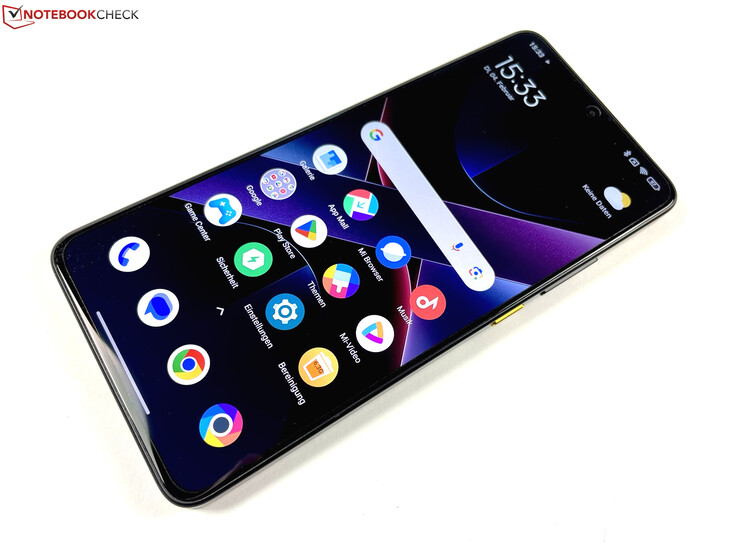








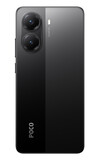


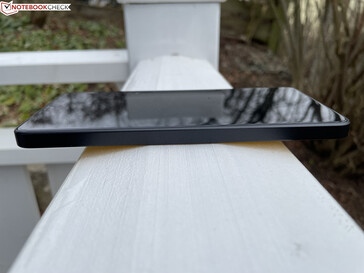
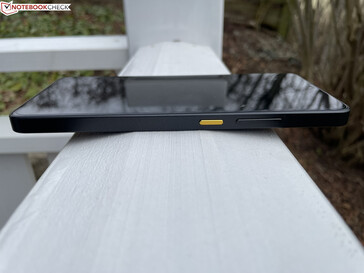

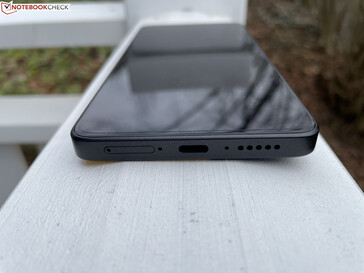

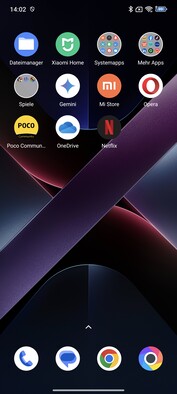
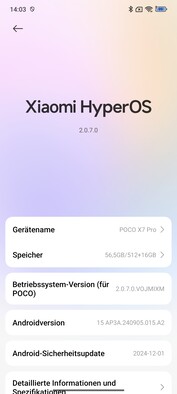
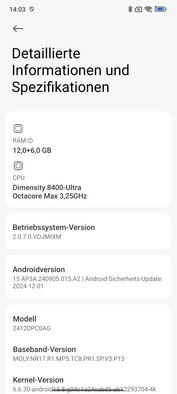
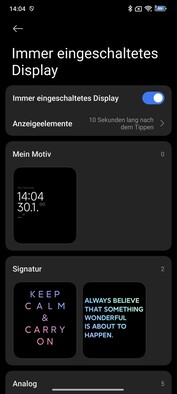



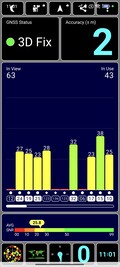
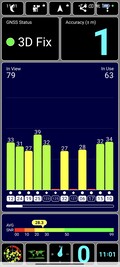
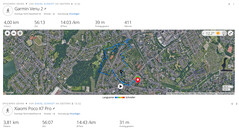









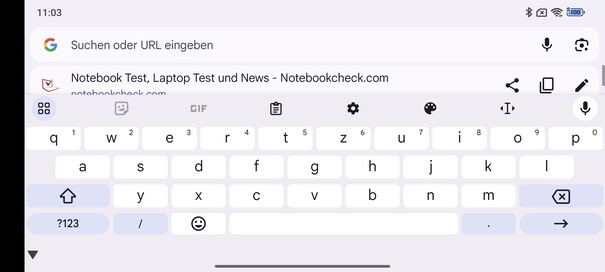

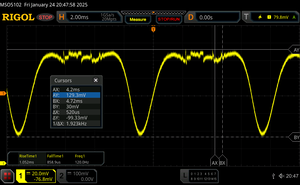





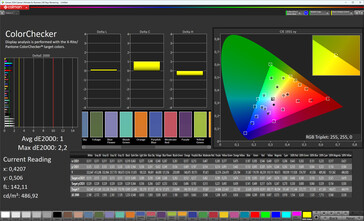
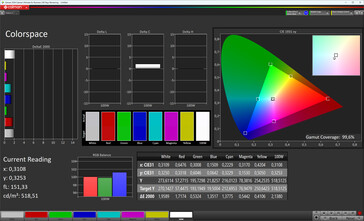
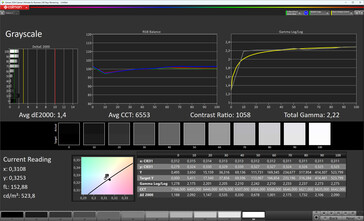
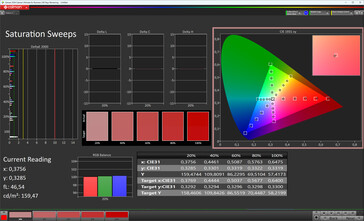
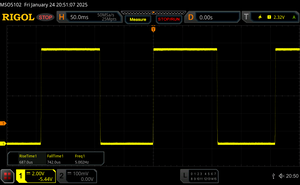

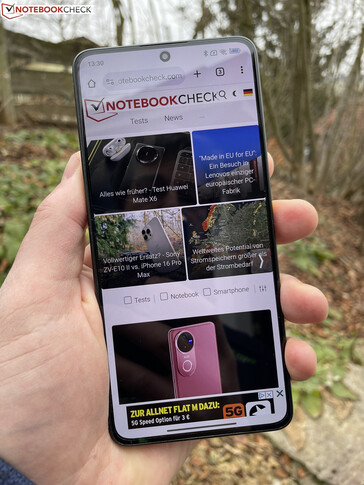
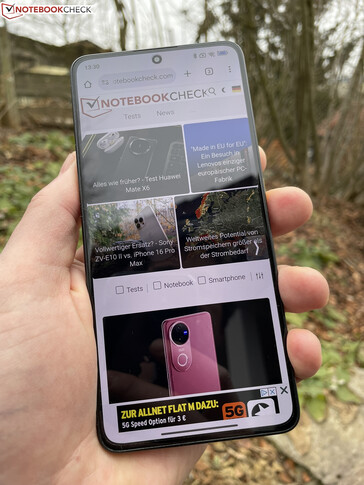




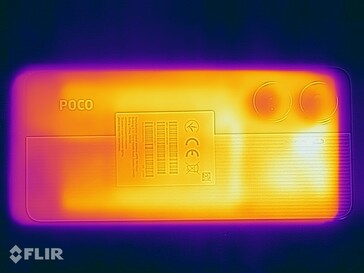
 Total Sustainability Score:
Total Sustainability Score: 








